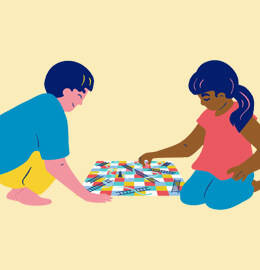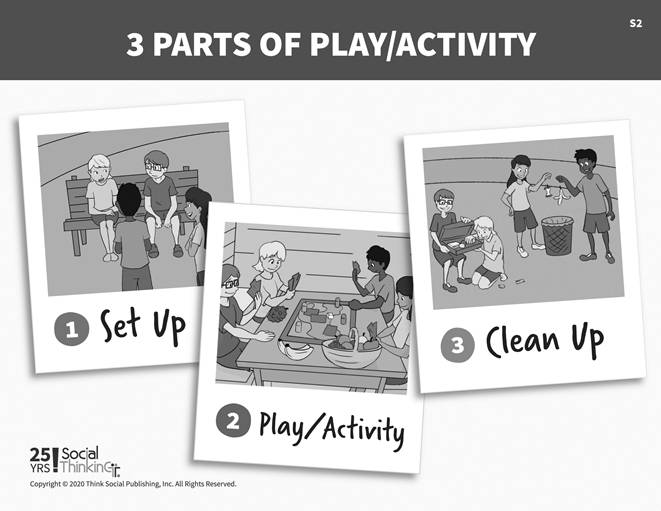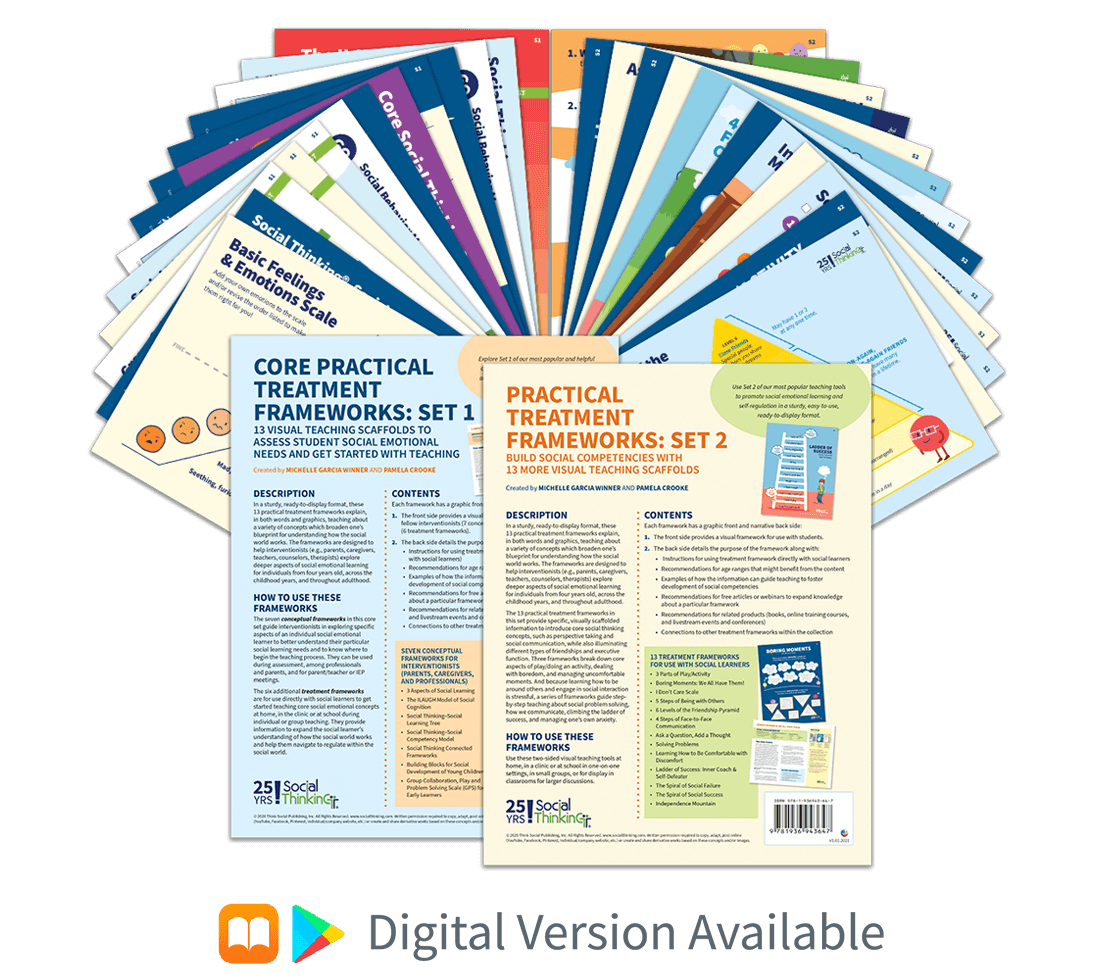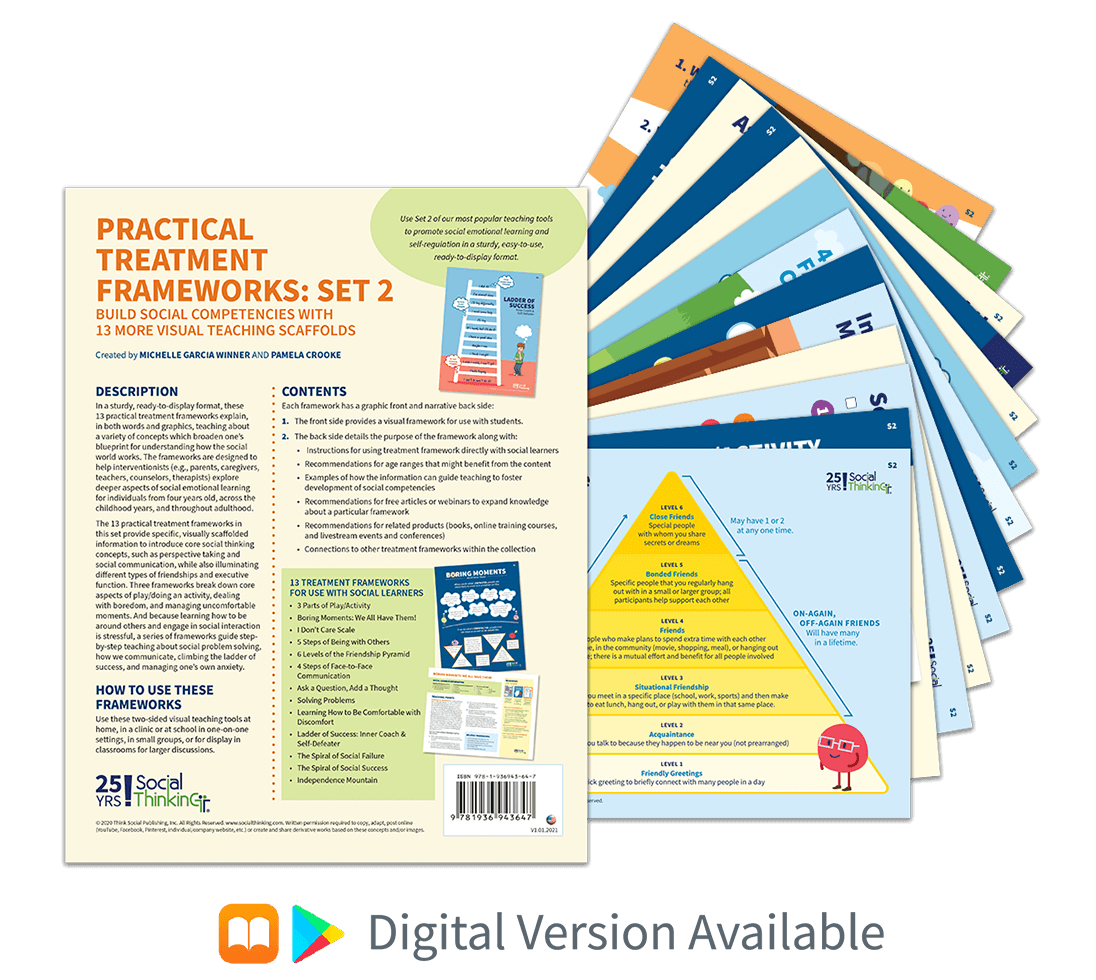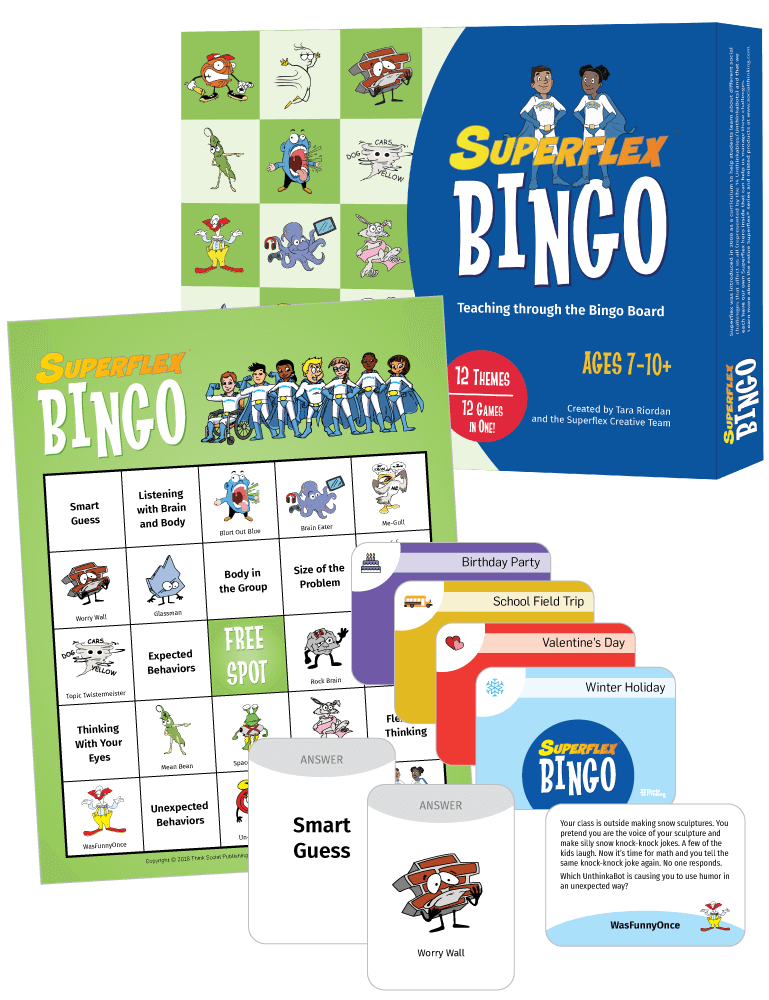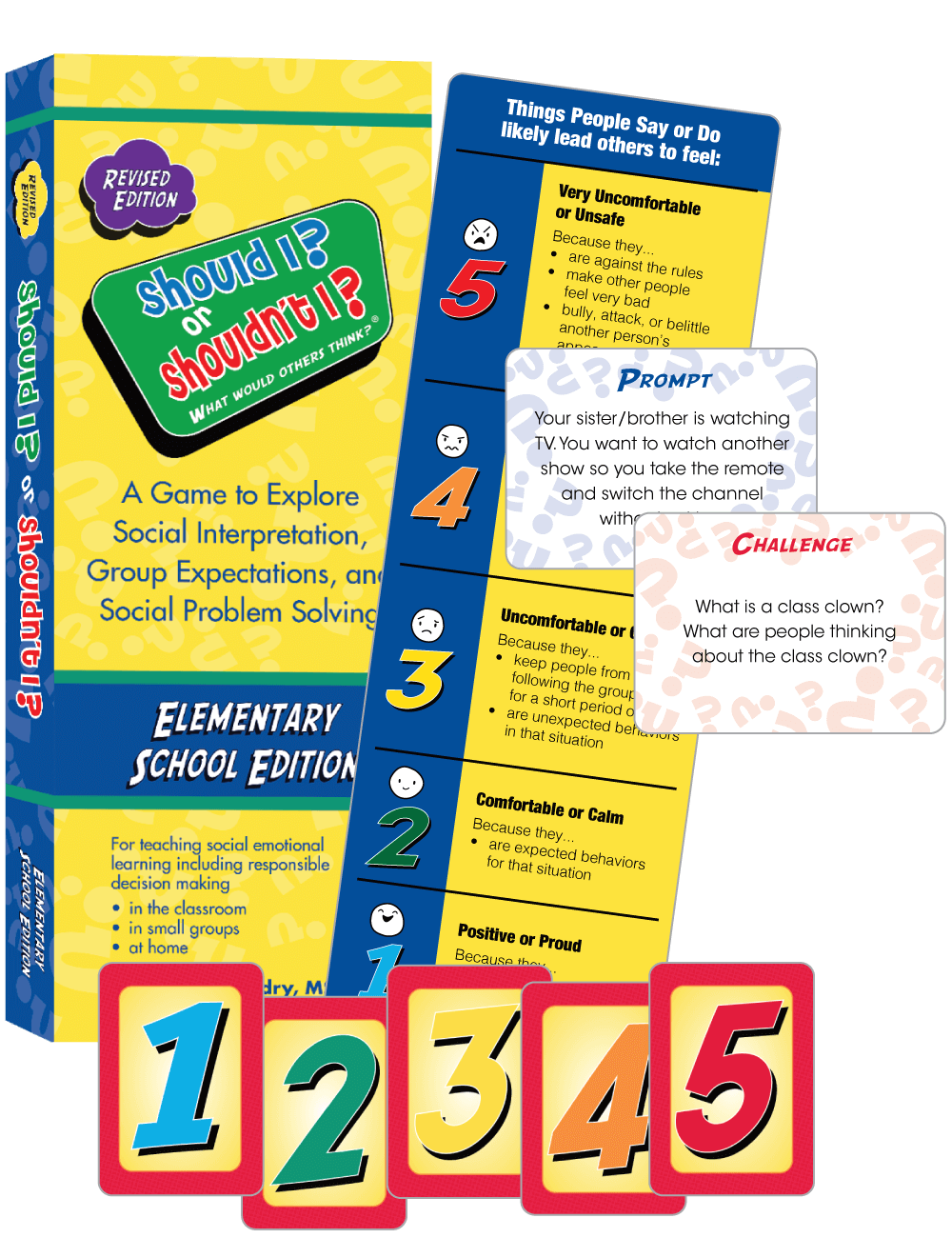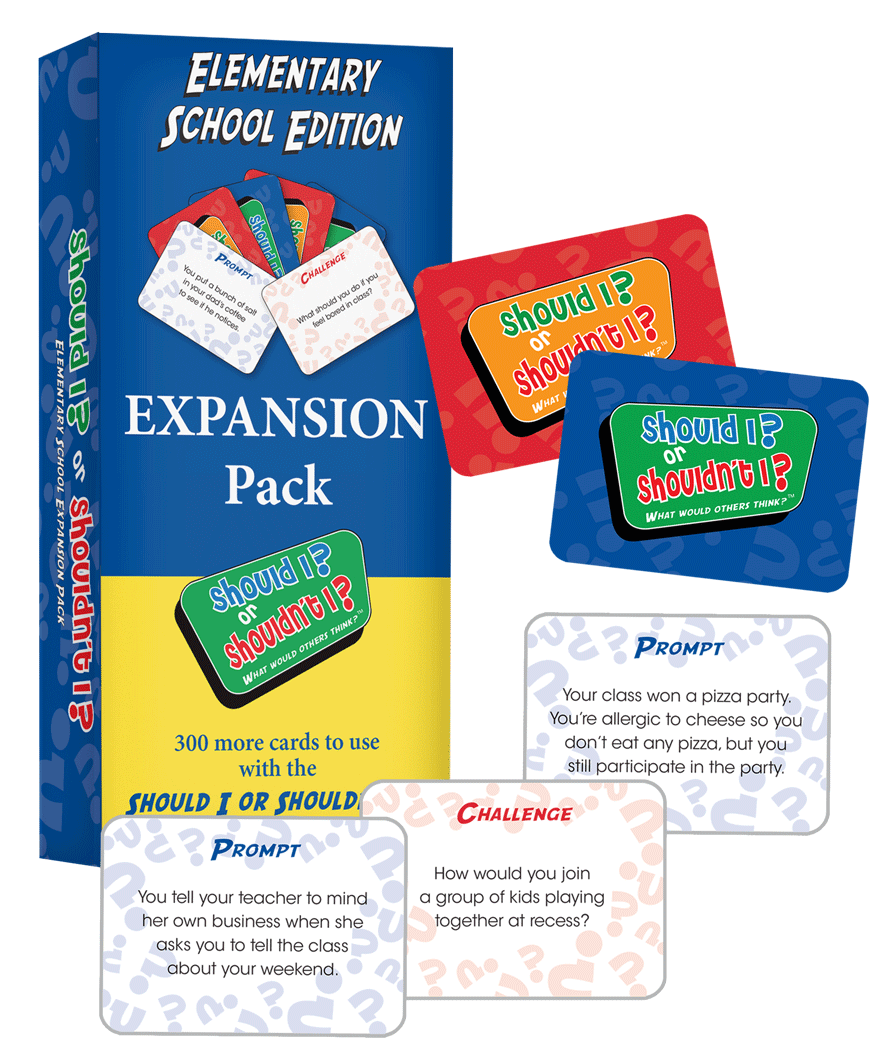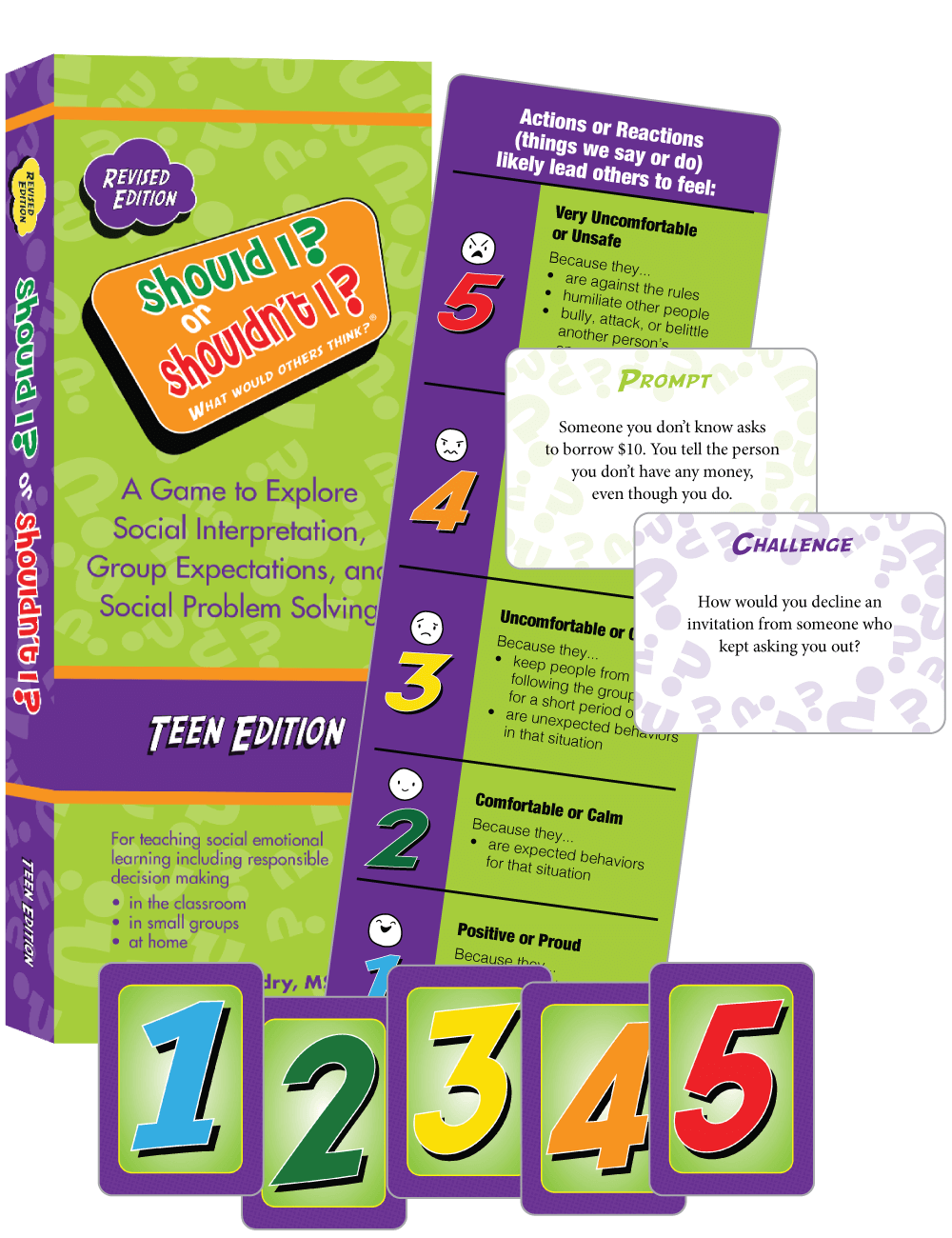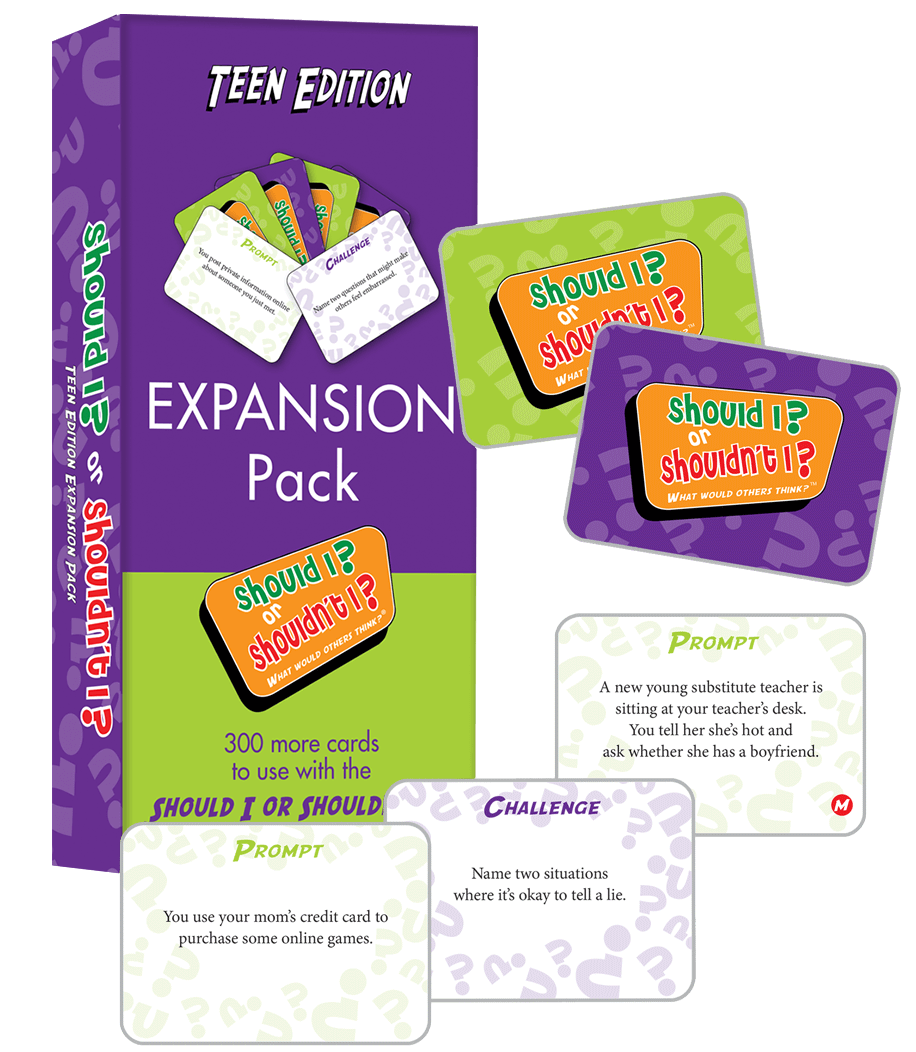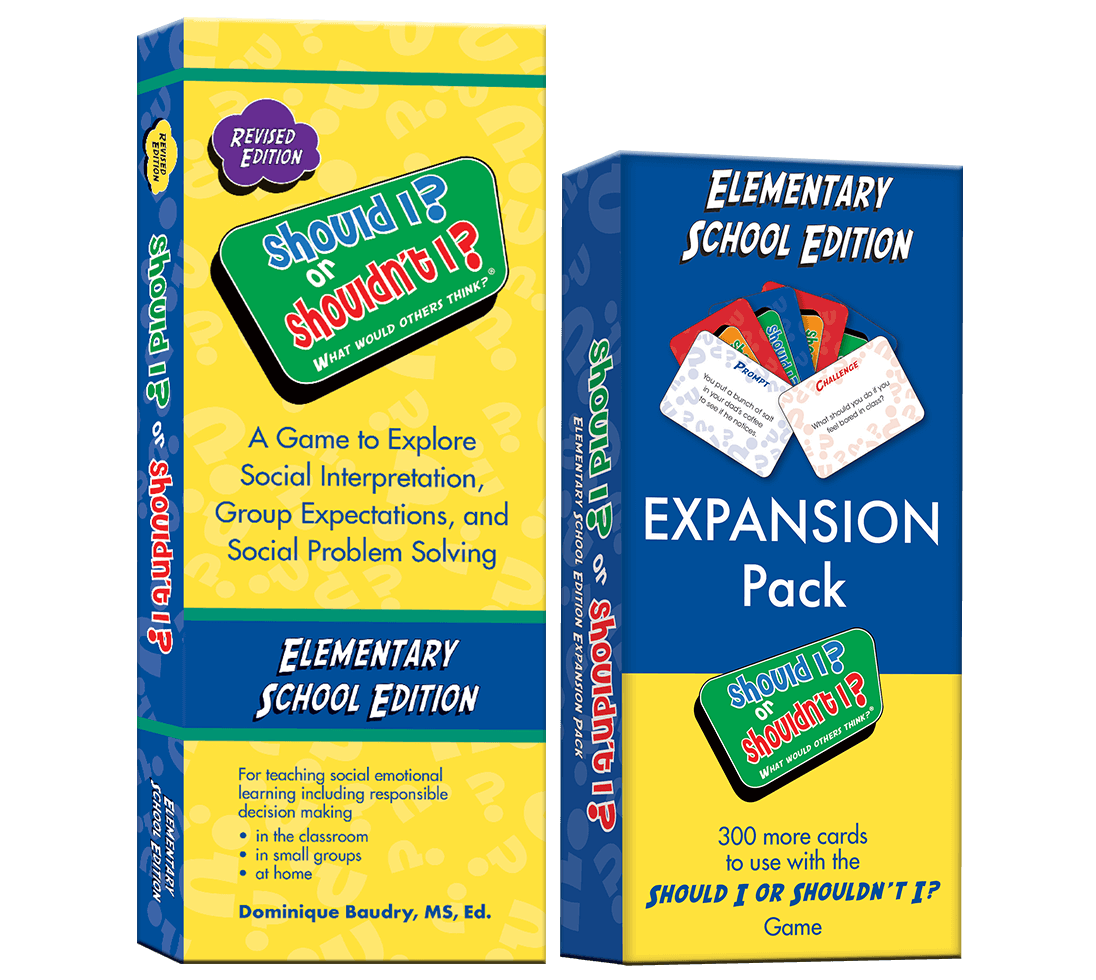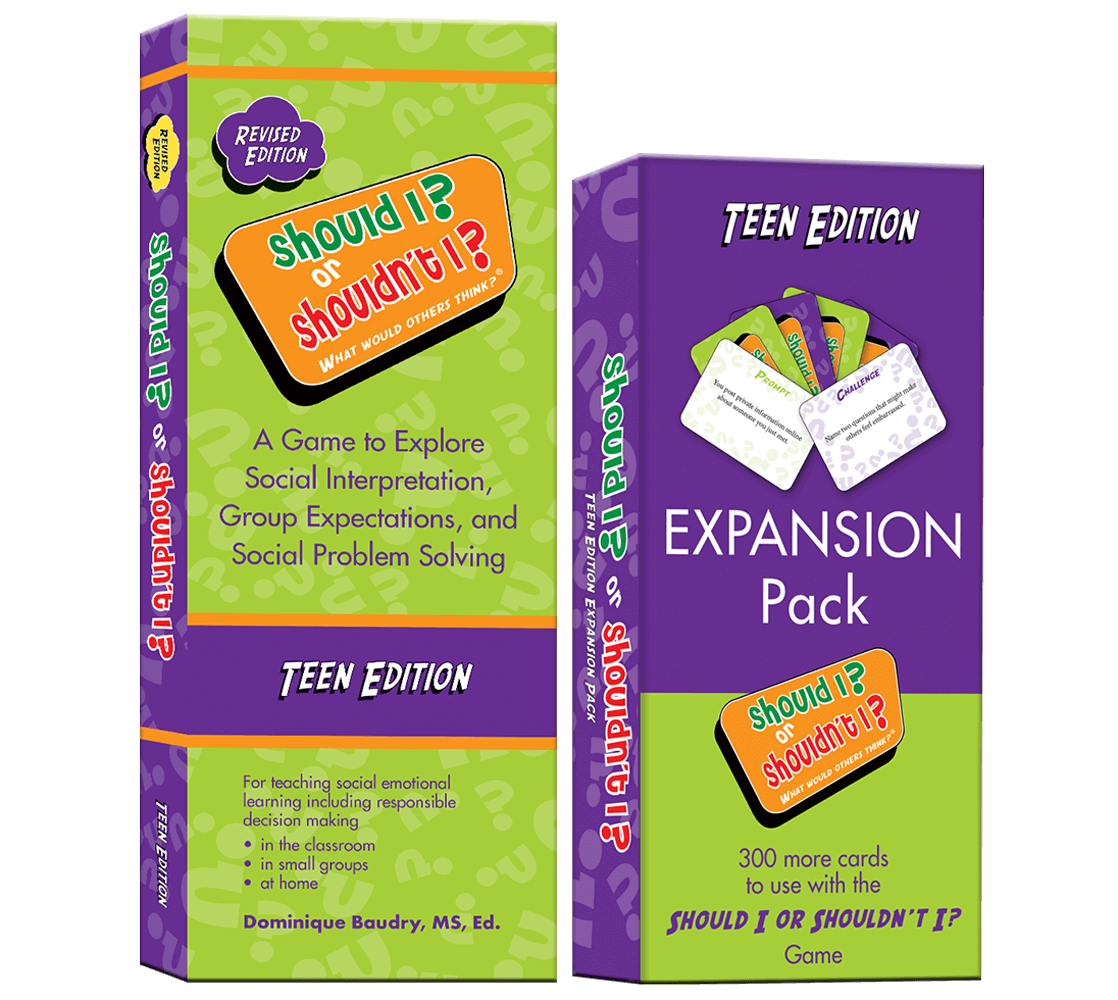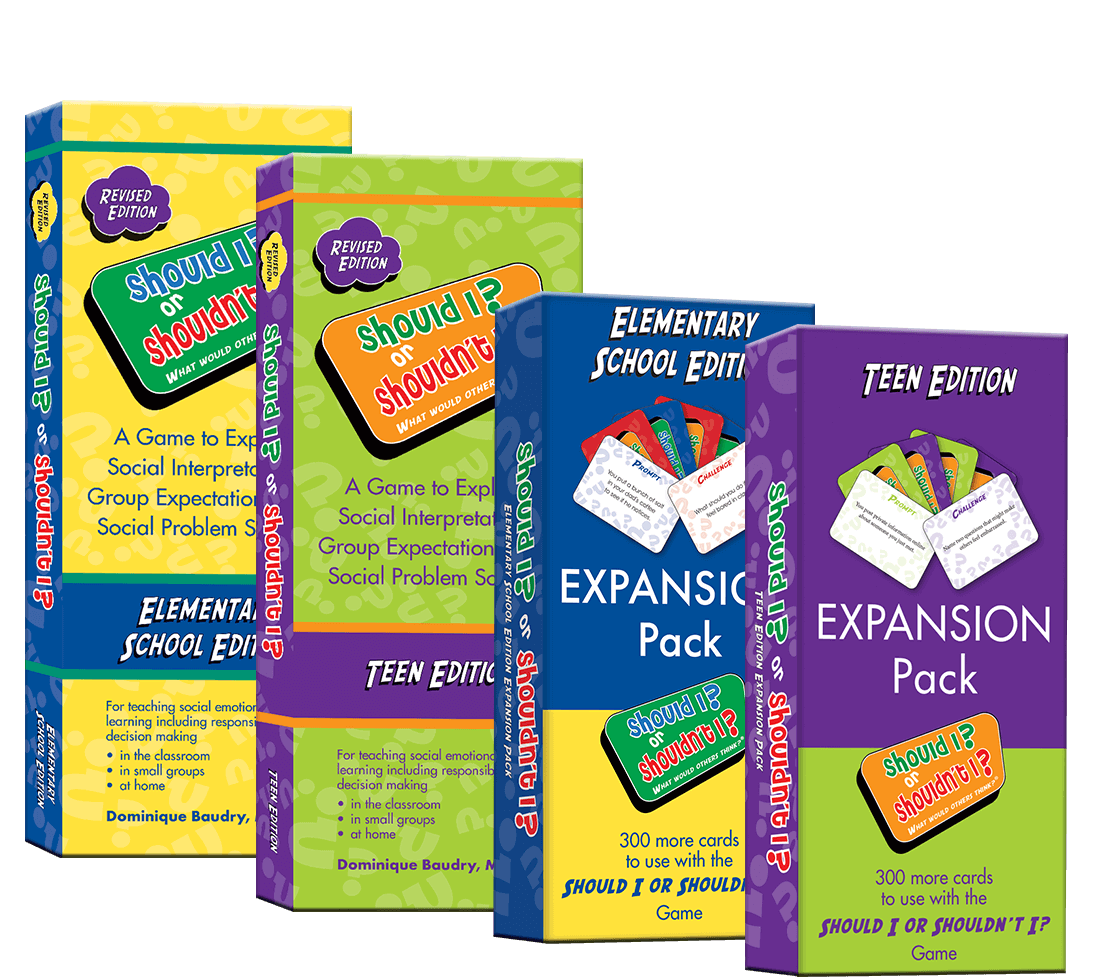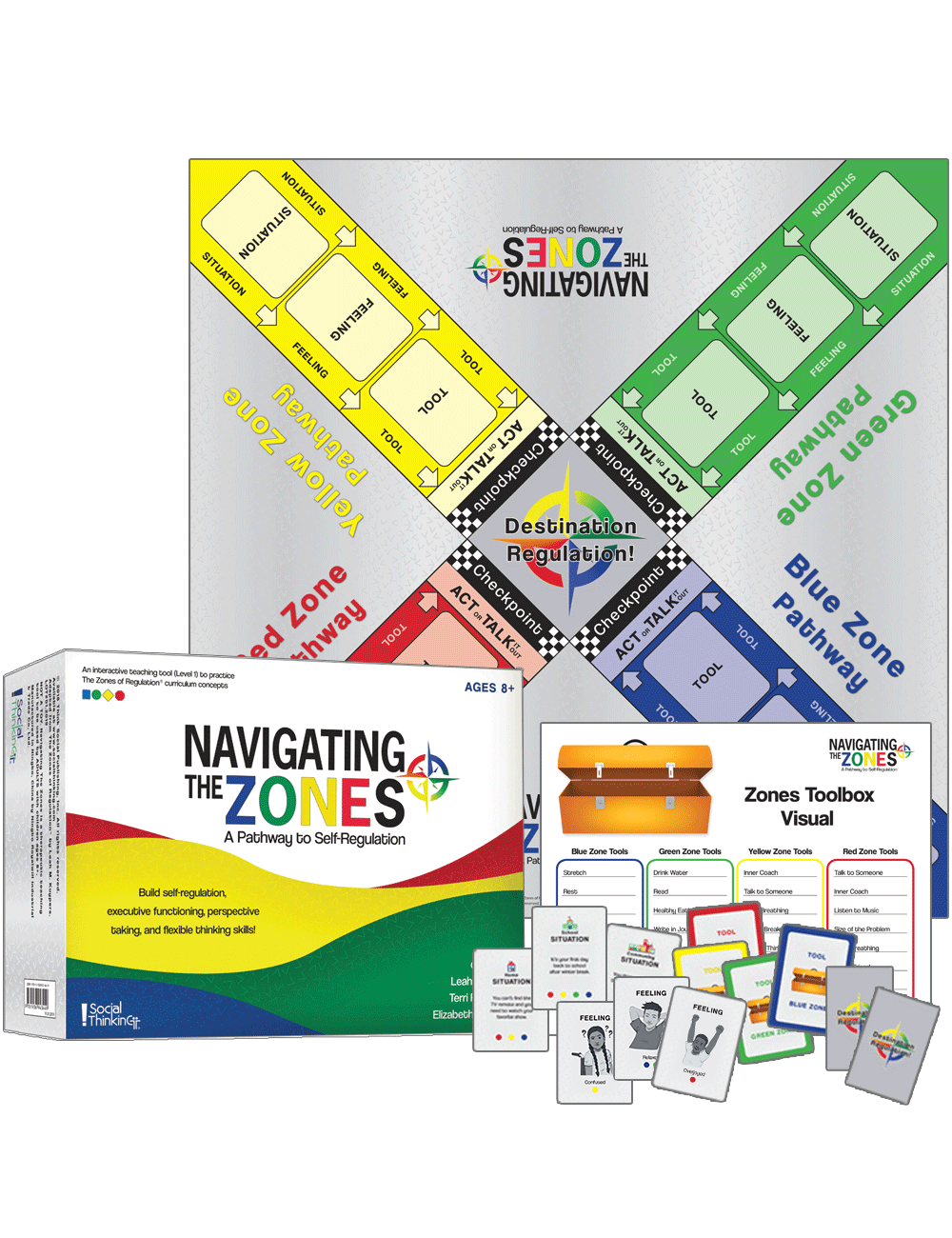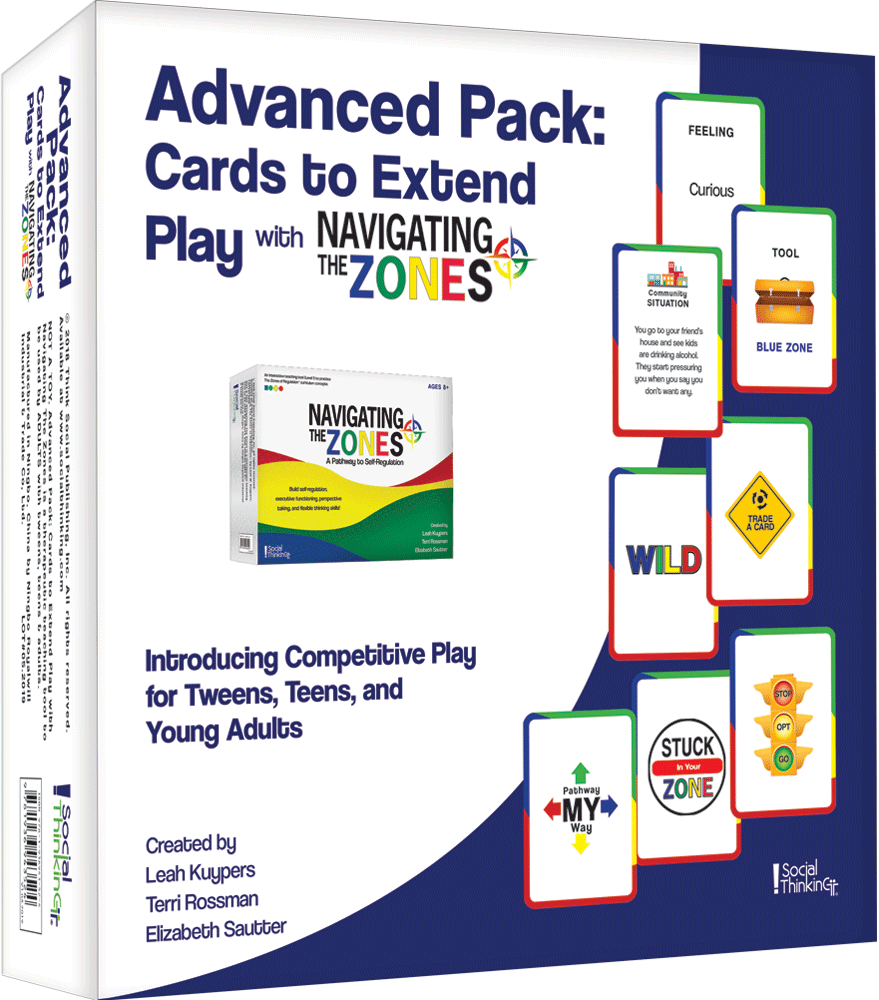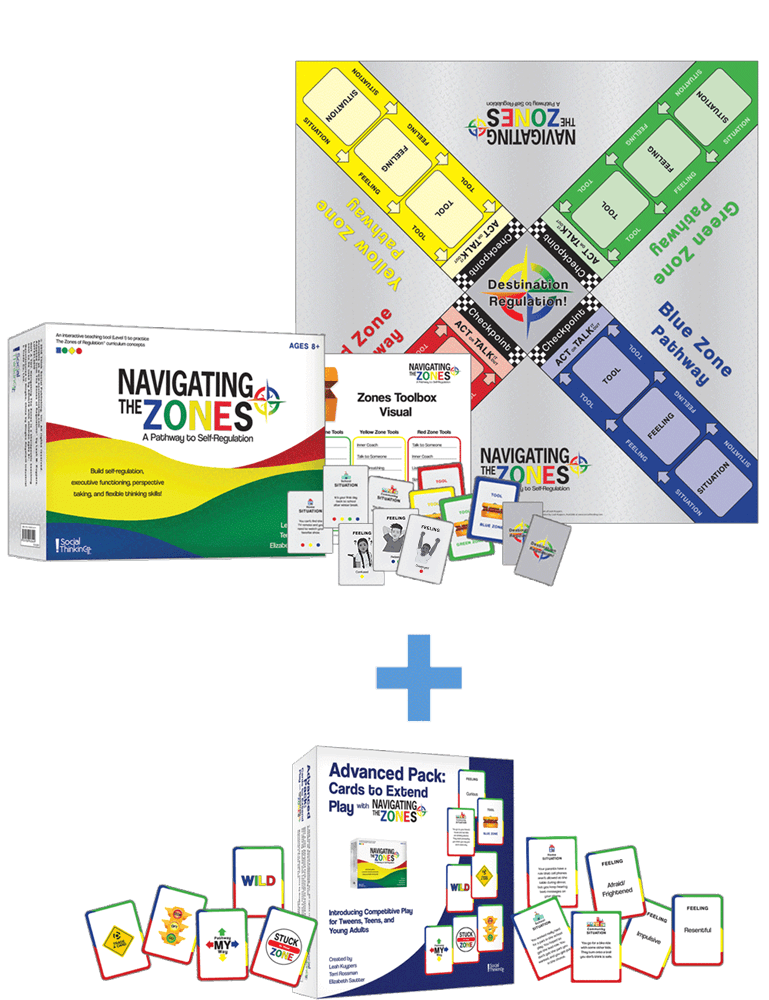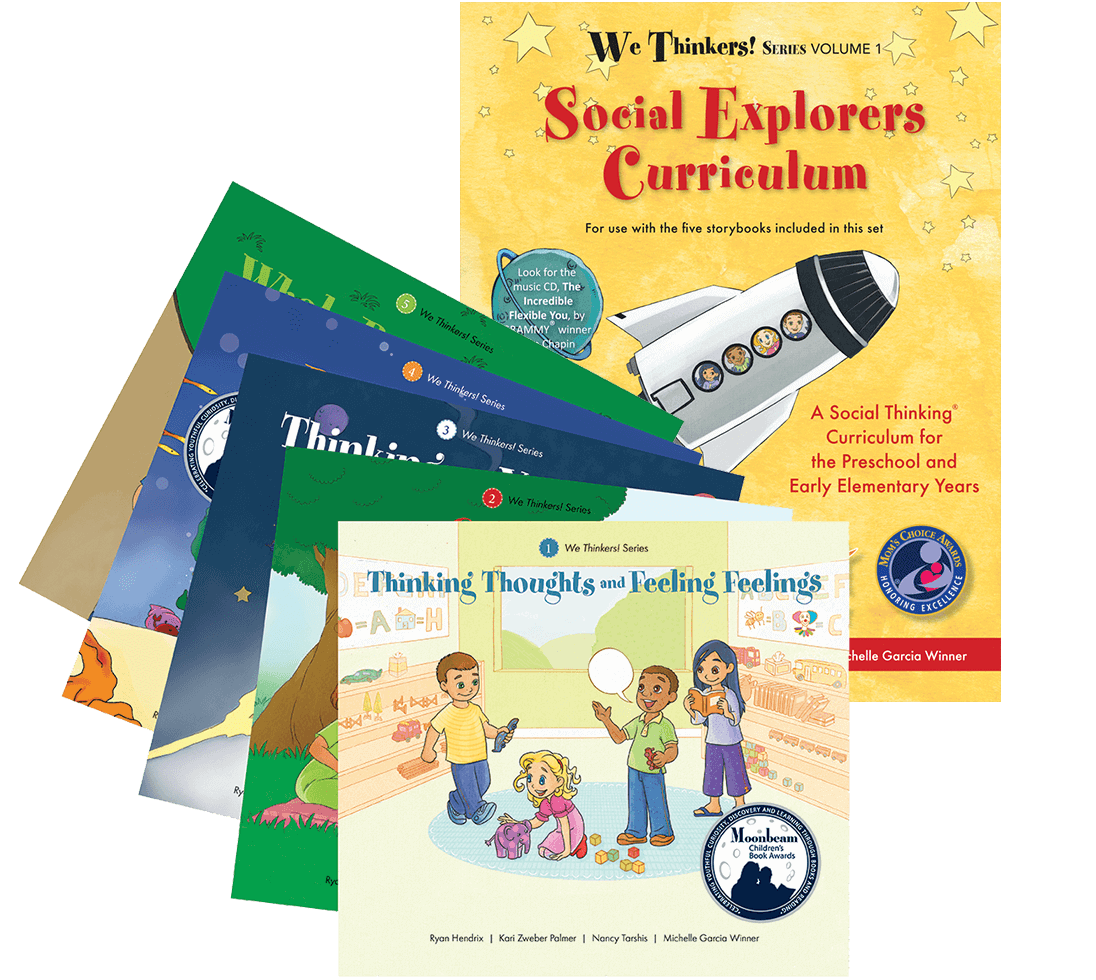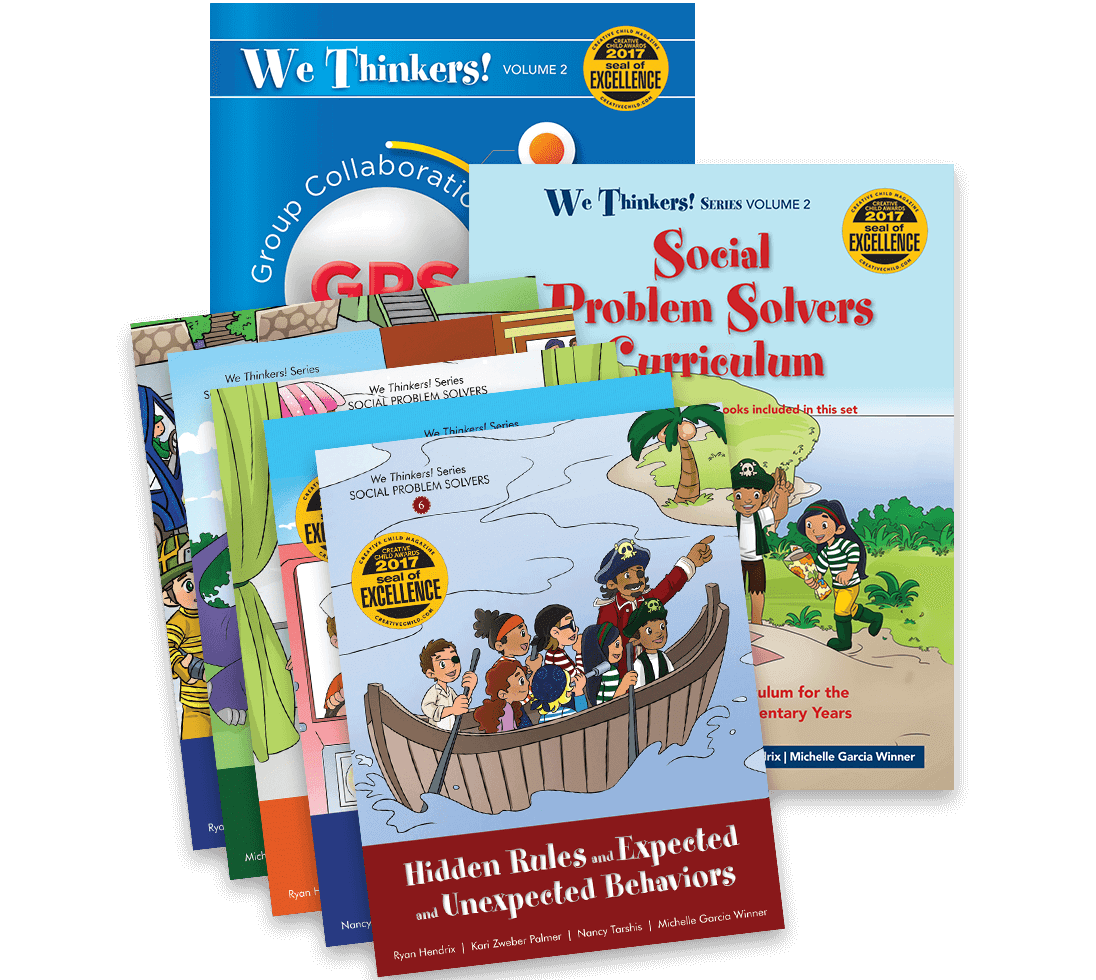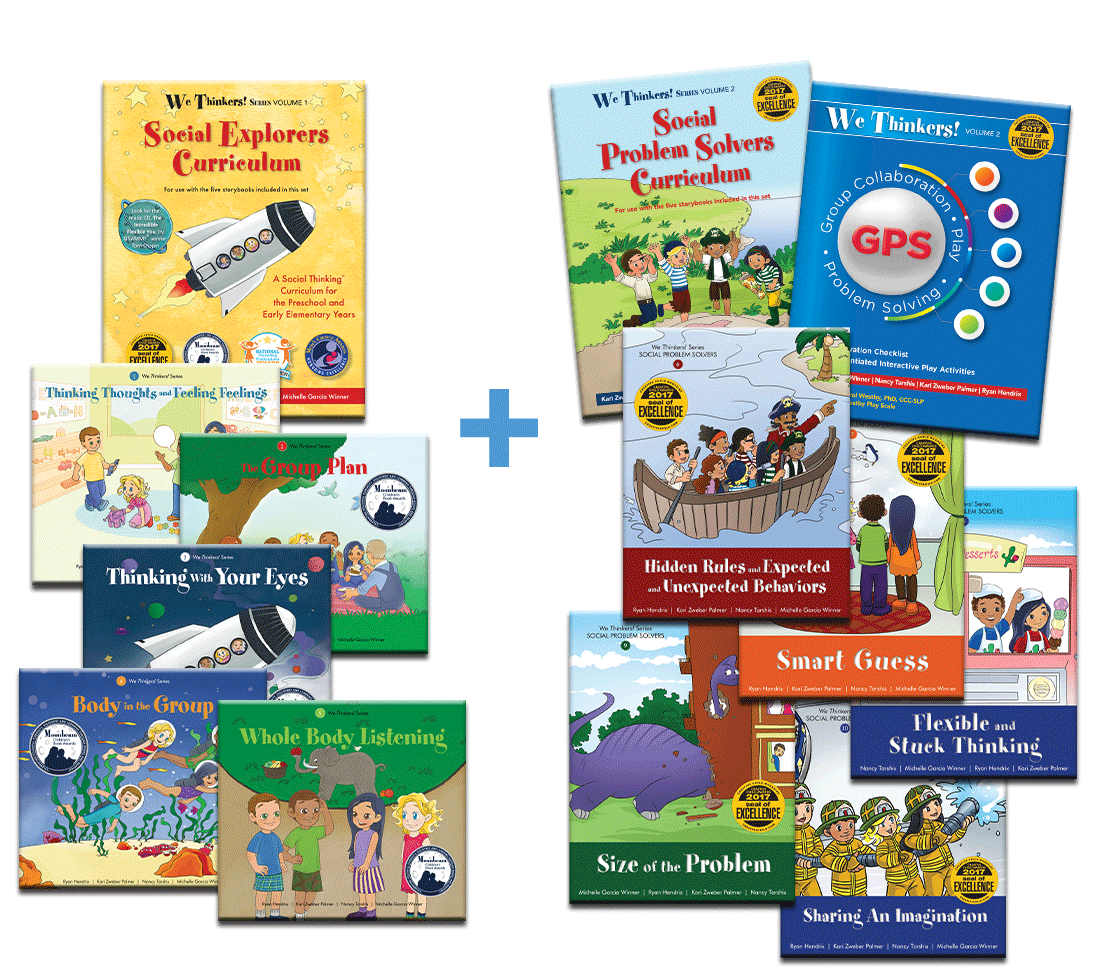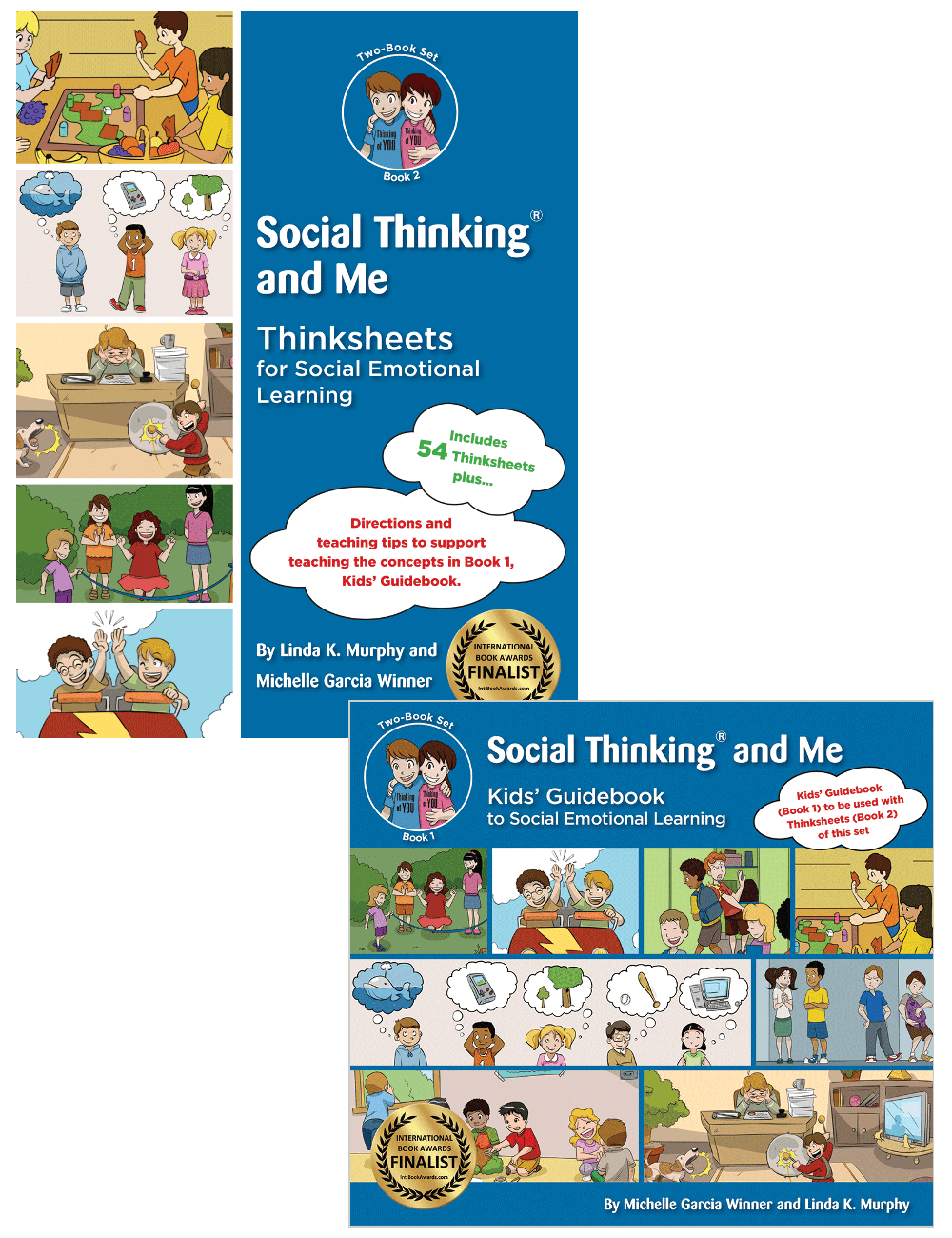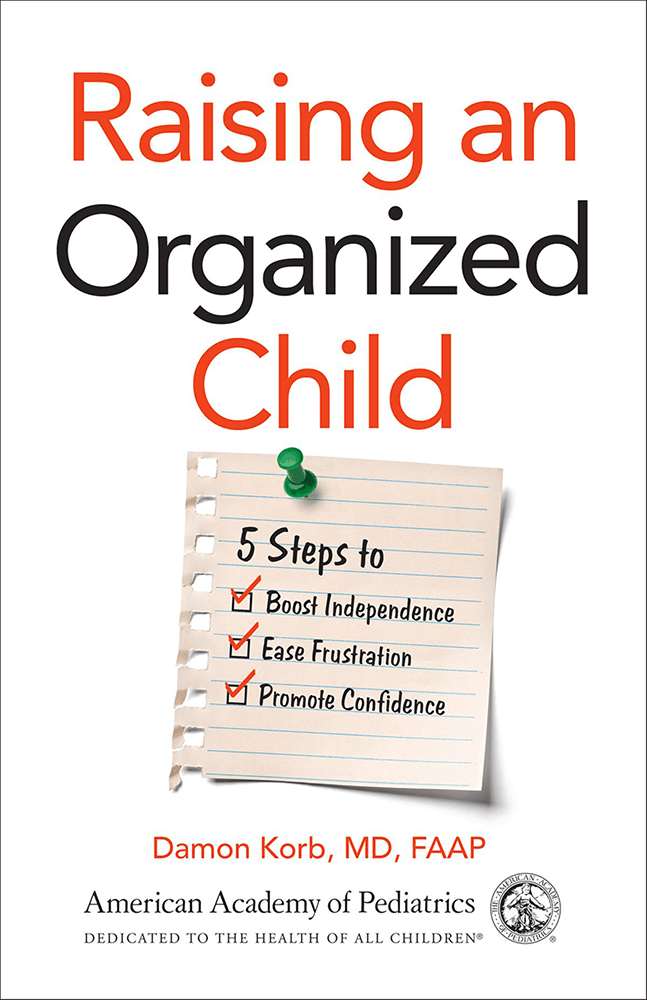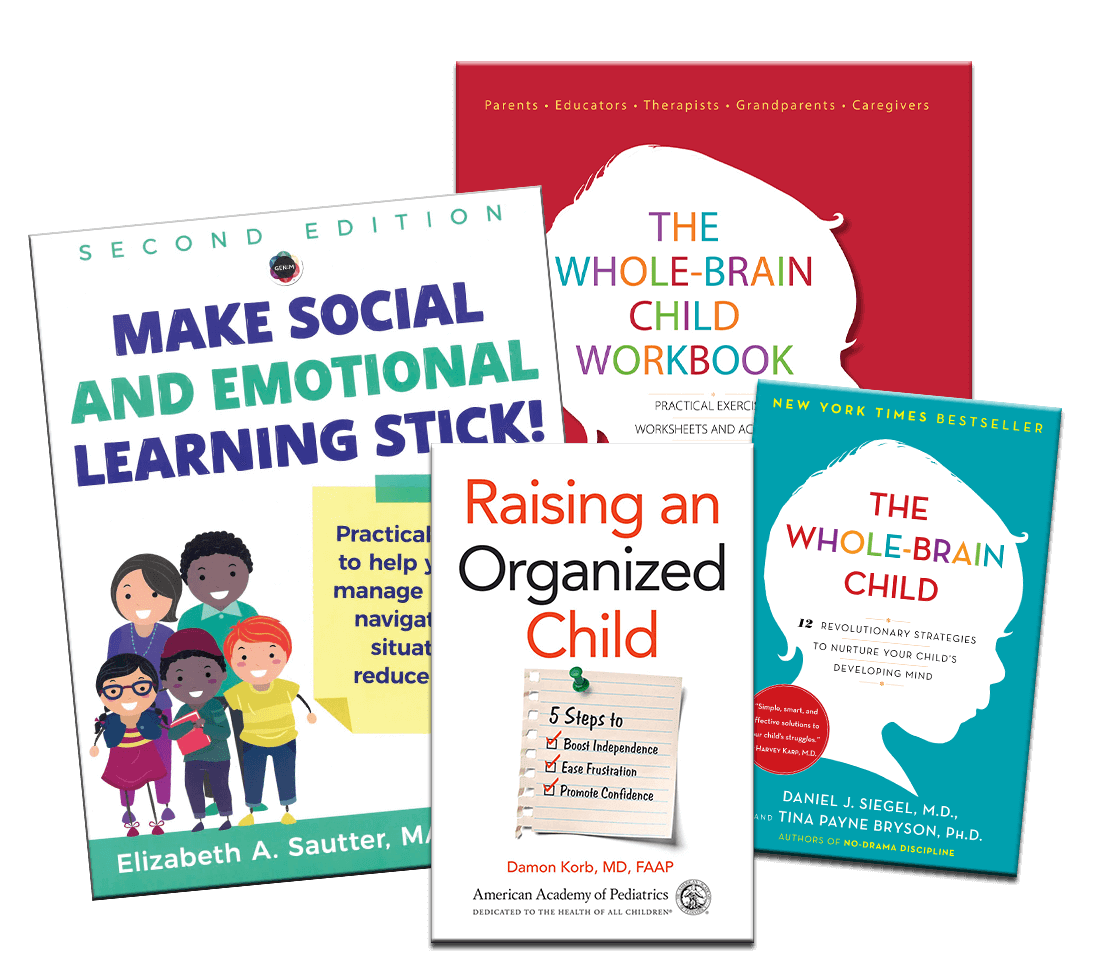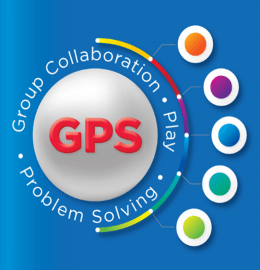© 2024 Think Social Publishing, Inc.
With only 10 minutes of time remaining, my group was stuck. Frustrations mounted; brows furrowed. Which game should we play?
Each student had suggested a fun option. What about Uno? Headbands? Or how about a card game? Despite their eagerness to play, they could not find compromise.
As the time ticked down, it soon became apparent we would not have enough time to play together. And apparently, I needed a different strategy for next time.
The 3 Parts of Play/Activity is a visual framework designed to teach social learners about planning, choice making, and time management—all executive functions. It also helps individuals learn that any activity involves a process, and there are steps we take from start to finish while keeping time limitations in mind. This builds essential and foundational executive functions.
The nice part about this framework is that we can explain that any activity, whether individual or group based, has at least three parts, and all parts involve time prediction.
This very simple visual support can be used to help make explicit the 3 Parts of Play/Activity and the amount of time we want to spend in each.

Each segment is a different size on purpose! This helps to illustrate the idea that even if the goal is to spend the most time in play, set up and clean up or wrap up is also a necessary part of the bigger plan. As with anything in the social world, the specifics will depend on the situation, but generally set up and clean up (or wrap up) take up less time or are smaller parts of the plan.
Part 1: Set up
Social learners predict the amount of time they will need (or have available) to complete all three steps. Set up includes considering both the space and thinking about the overall goal.
Talk about what materials might be needed and encourage thinking about what needs to be done to move toward the collective or individual goal. While this may add some time to the set-up process, having a goal in mind or a future picture or plan supports problem solving within the play.
Set Up:
- Space (consider where and who)
- Physical space – What works for you and others?
- Materials you’ll need
- Decisions to make
- Thinking
- What is the goal?
- Plan for play/do
- Set time for set up, play/do, and clean up/wrap up
- Solve for problems before they start
- What can we anticipate?
- What are the expectations?
- What do we remember has been successful?
- Difficult?
Part 2: Play/Do
Do the chosen activity in the amount of time that you have.
It can also be helpful to create opportunities within the activity to pause and check in on how things are going.
- Are we moving toward our own and collective goals?
- Is there problem solving or a strategy that would help the play or plan move forward?
- Anything we might change?
Part 3: Clean Up
Clean up or wrap up the activity so that it is completed within the specified amount of time. The end of Clean Up signifies individuals are now ready to move on to another activity.
Discussion and reflection support students in making meaning of the experience and can set them up for the future or next time they engage in something similar.
- Work as a group to shift from the activity to being finished.
- Notice what is happening in the situation to move toward collective goal.
- Highlight roles as part of the clean up.
Reflect:
- What went well? Felt good?
- What didn’t?
- Did I move toward my goal?
- Thoughts about next time?
- Beyond the activity?
The 3 Parts of Play/Activity is one of the core Social Thinking Vocabulary and is included in Set 2 of the Visual Frameworks set. Use this concept to introduce and then customize based on your own group.
Here is how I used it in my own group.
I introduced the 3 Parts of Play framework by drawing the visual support below on a dry-erase board, and we discussed how there are 3 parts to our play. Last time, we got stuck on the “set up” portion of the plan. It looked something like this:
But now it’s a new week, and we had a chance to try again. Where did we want to spend most of our time? The play! Clean up time is not flexible—the group had to end on time. Therefore, we needed to use our flexible thinking strategies in our set up. The quicker we set up, the more time we had to play.
We then estimated how much time it would take to do our set up. We needed to choose a game, agree upon the rules, make quick choices, and arrange the materials. This discussion helped all group members to become more sensitive to others in the group, their preferences, and how to track their time with more awareness to accomplish a group goal. While it was still a challenge to reach consensus, this framework was key to our learning over time.
The 3 Parts of Play/Activity can be extended to far more situations than playing a game!
Check out the free downloadable that you can use a visual support or reminder after teaching the concept as well as the free Thinksheet from Social Thinking and Me.
Here are more ideas.
- Mealtime: Set up (cook, set table), Activity (eat, talk together), Clean Up (clear and wipe down table, store leftovers, wash dishes)
- Homework: Set up (gather materials, read instructions), Activity (do work), Clean Up (submit assignment, materials in backpack)
- Teens hanging out with friends: Set up (bodies in group, greeting), Activity (hang out), Wrap up (farewells)









